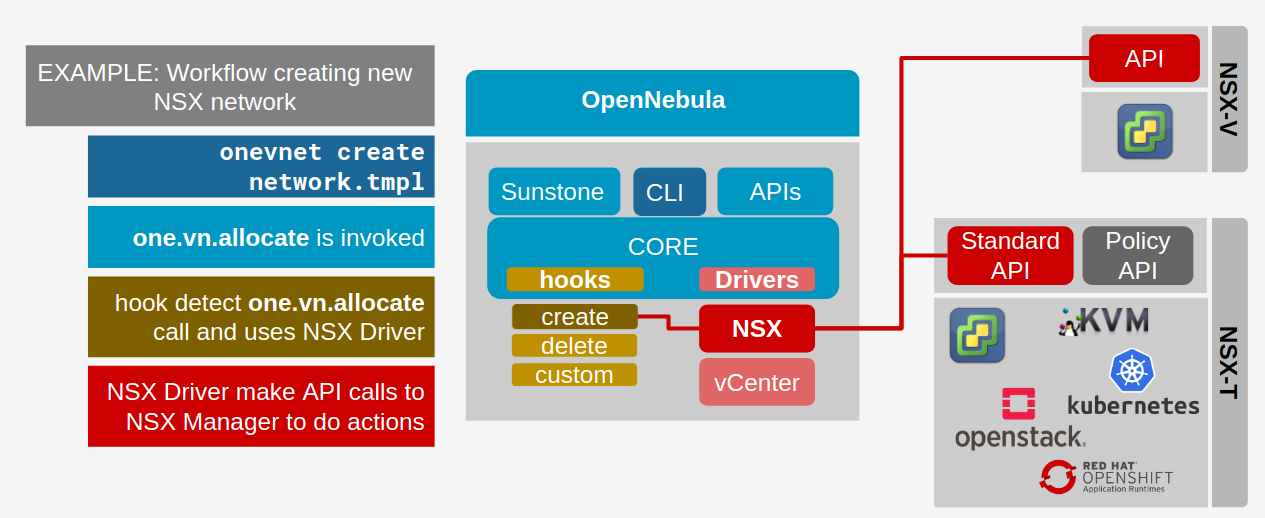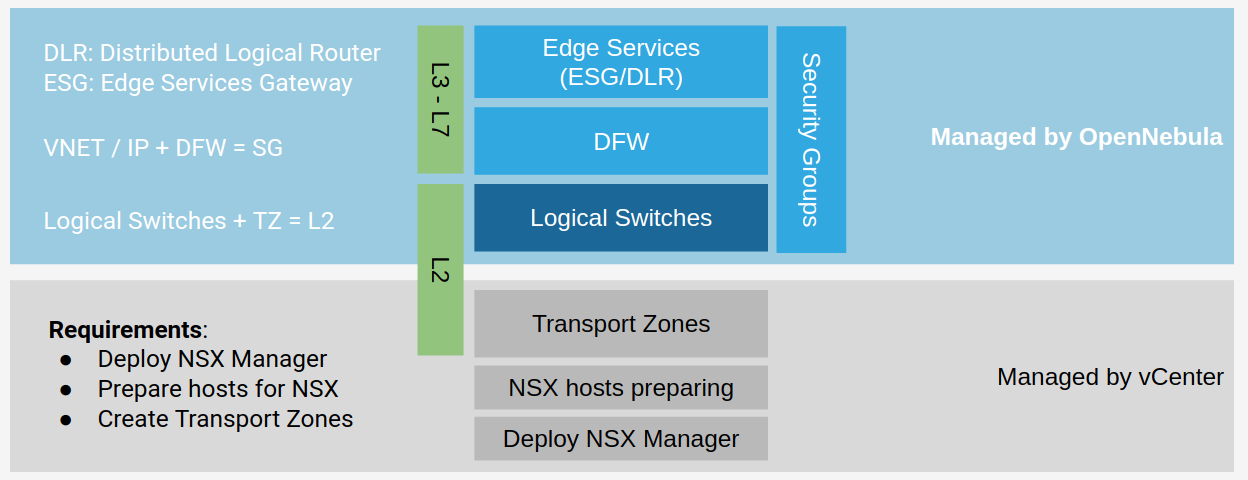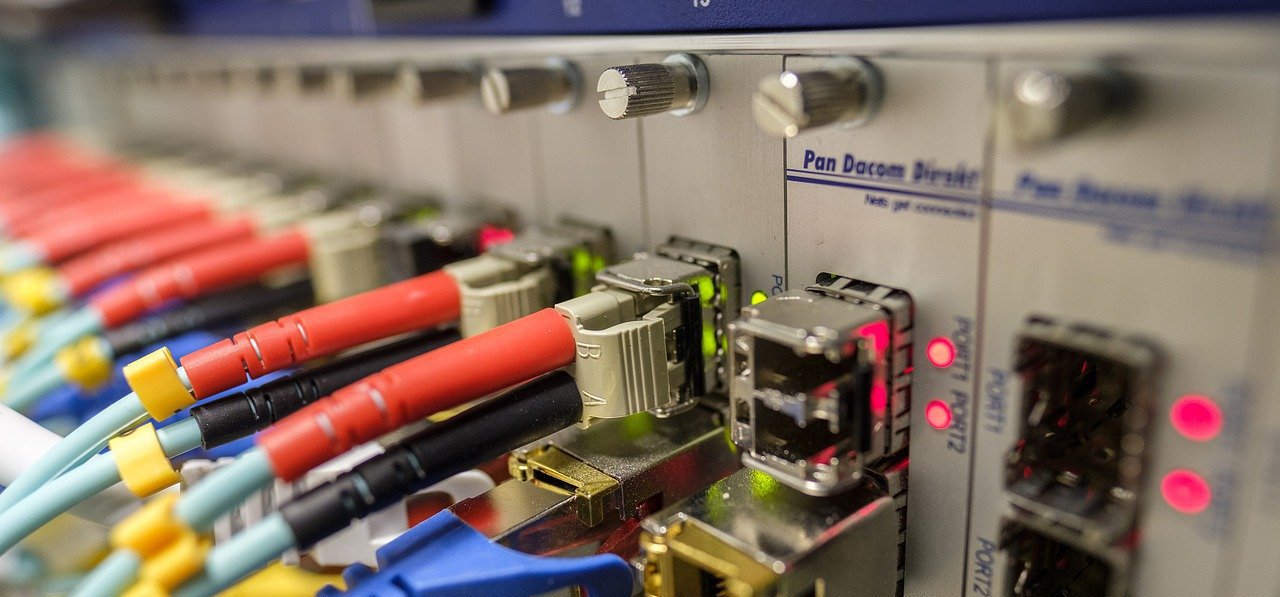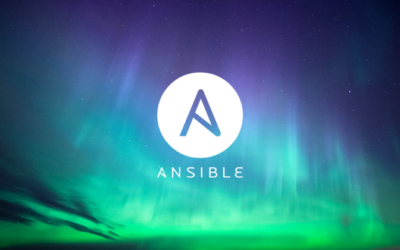OpenNebula 5.10 “Boomerang”, whose stable release will be available in a matter of days, is the first version that officially supports VMware’s software-defined networking platform NSX in its two designs: NSX-T and NSX-V. This integration already covers logical switches, but it will also include support for security groups and edge services in the near future.
Architecture
Let’s start from the beginning—but don’t worry, we won’t be talking about Alan Turing today! 😉 There are two main components involved in the integration of VMware NSX into the forthcoming 5.10 release of OpenNebula:
- The NSX driver
- The Hook Subsystem
The NSX driver is the component that’s in charge of connecting OpenNebula and the NSX Manager API, sending through all the required actions. This driver implements all the necessary functions and objects that are required to manage the different NSX components.
The Hook Subsystem, on the other hand, enables the execution of custom scripts tied to a change of state in a particular resource or API call. As part of the NSX integration, the Hook Subsystem is used to create and delete networks. It does that through two hooks, that are automatically created when a vCenter Server is imported into OpenNebula.
Here you have an example illustrating the different elements in the NSX architecture:

The diagram shows how a logical switch is created in OpenNebula, but let’s review the process step by step:
- First,
onevnet createis executed to create a network. - This command invokes the
one.vn.allocateAPI call. - The
vcenter_net_createhook is waiting forone.vn.allocatecalls. It launches thevcenter/create_vcenter_net.rbcommand when that API call is invoked. - The
create_vcenter_net.rbscript implements the needed NSX driver components to create a logical switch on NSX Manager and then return the corresponding details. - The network created on OpenNebula is updated with the information received by the hook.
NSX Driver
Some of the components of the NSX driver have already been developed, while others are currently in development. Here you have a diagram to help you navigate all these different components and understand how they relate to each other:

Hooks
Now, the other essential element of this integration: let’s have a closer look at the two hooks that are involved in the NSX integration. These hooks are created at VMware vCenter import time.
One of them is create_vcenter_net.tmpl:
NAME = vcenter_net_create
TYPE = api
COMMAND = vcenter/create_vcenter_net.rb
CALL = "one.vn.allocate"
ARGUMENTS = "$API"
ARGUMENTS_STDIN = yes
The other one is delete_vcenter_net.tmpl:
NAME = vcenter_net_delete
TYPE = api
COMMAND = vcenter/delete_vcenter_net.rb
CALL = "one.vn.delete"
ARGUMENTS = "$API"
ARGUMENTS_STDIN = yes
If you want to check if you have those hooks already created, you can always use the following command:
$ onehook list
You should see an output like this:

What’s next?
Curious about the next steps along the roadmap of the NSX integration into OpenNebula? Here you have a sneak peek:
- We are planning to implement the distributed firewall to be able to integrate OpenNebula security groups. This is needed in order to achieve network microsegmentation.
- We will also implement several edge services, including NAT, DHCP, routing, FW, load balancing, and others.
The next picture shows the components that will be managed by OpenNebula in the near future:

If you want to learn more about using OpenNebula on top of vCenter, you can always have a look at the whitepaper describing our VMware cloud reference architecture. And remember: so far, OpenNebula can only manage logical switches on NSX, but that’s just the first phase of this integration… There’s much more to come, so stay tuned!




0 Comments